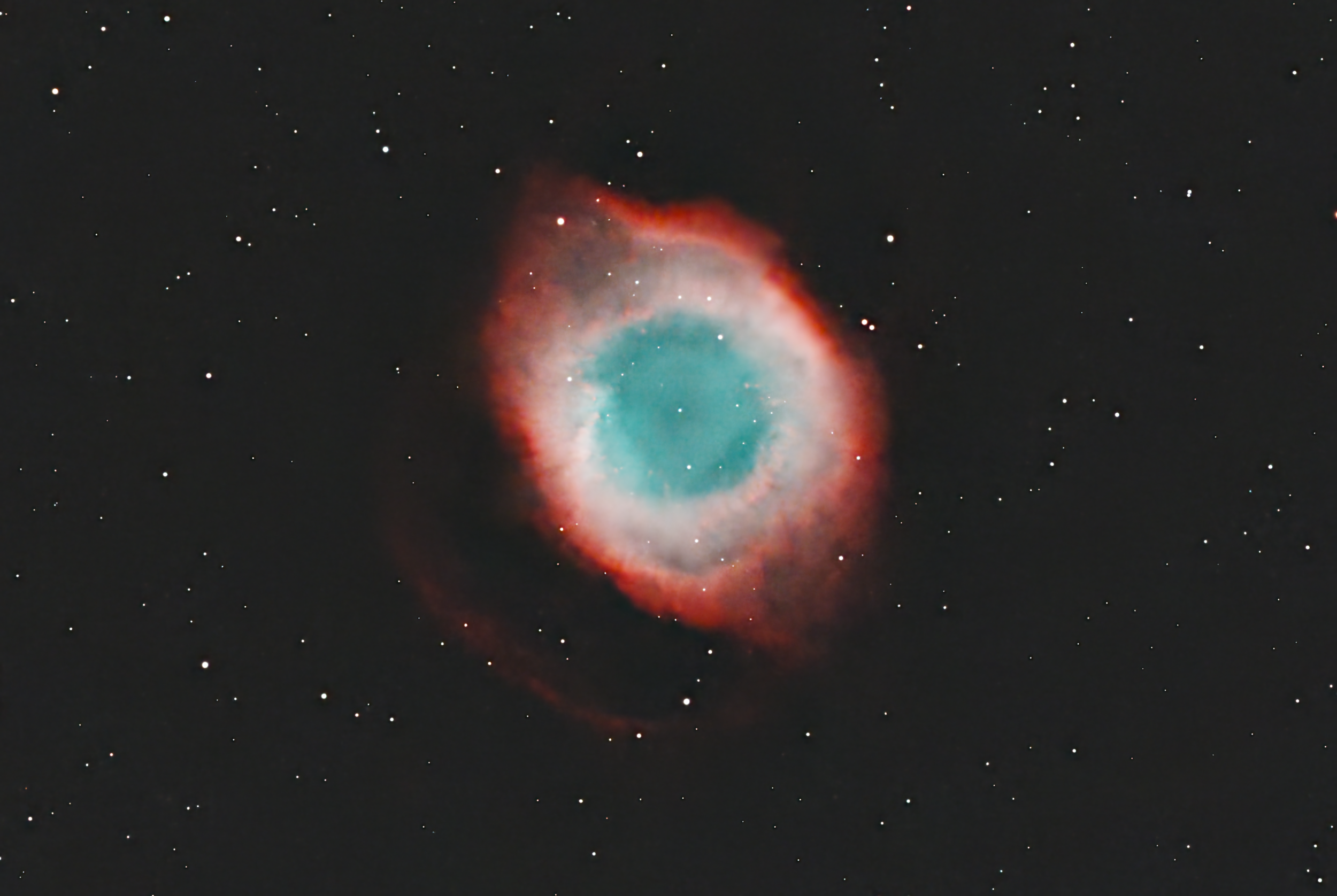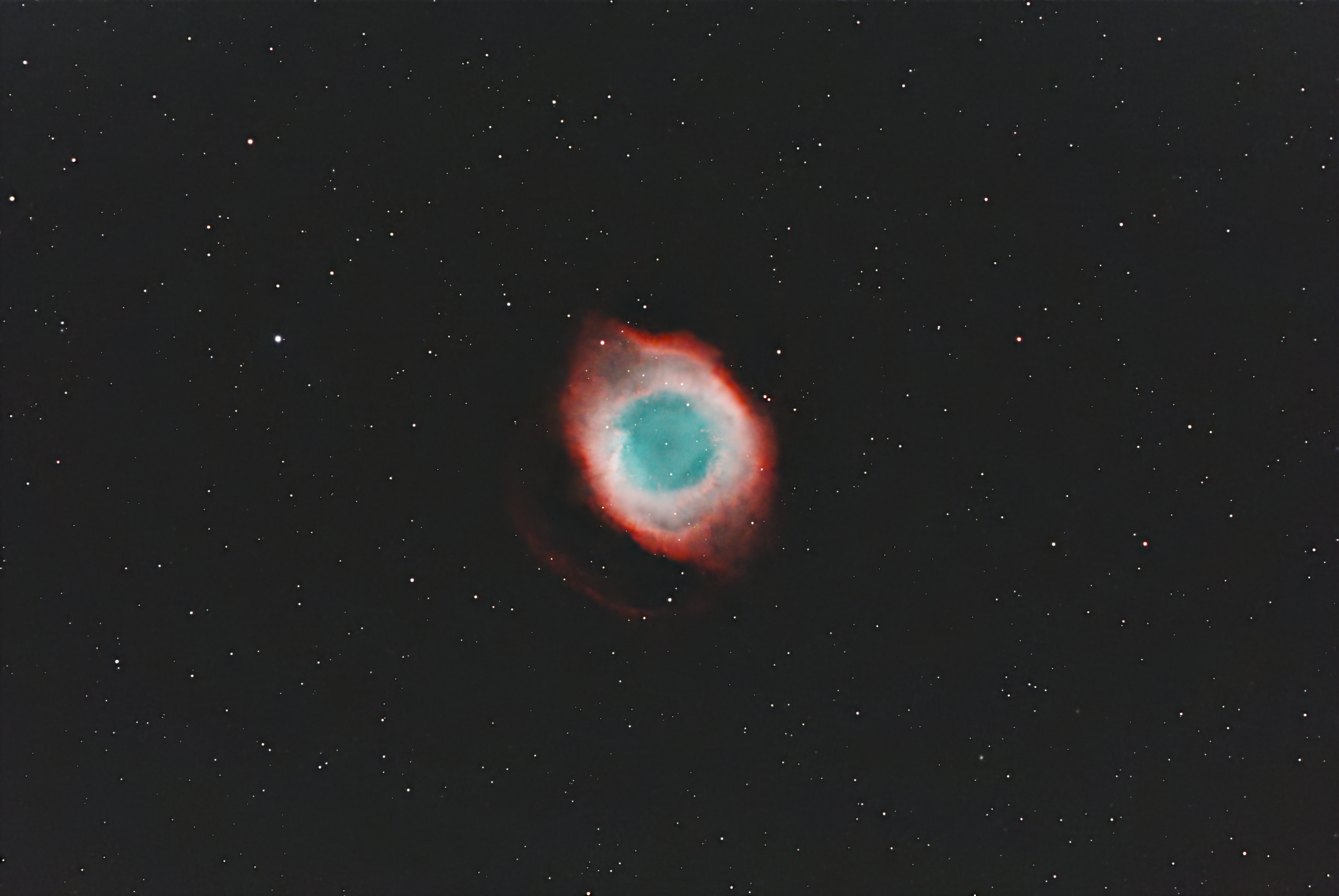

Wikipedia Description:
The Helix Nebula (also known as NGC 7293 or Caldwell 63) is a planetary nebula (PN) located in the constellation Aquarius. Discovered by Karl Ludwig Harding, most likely before 1824, this object is one of the closest of all the bright planetary nebulae to Earth.[3] The distance, measured by the Gaia mission, is 655±13 light-years.[4] It is similar in appearance to the Cat’s Eye Nebula and the Ring Nebula, whose size, age, and physical characteristics are in turn similar to the Dumbbell Nebula, differing only in their relative proximity and the appearance from the equatorial viewing angle.[5] The Helix Nebula has sometimes been referred to as the “Eye of God” in pop culture,[6] as well as the “Eye of Sauron“.[7][8]
General information
The Helix Nebula is an example of a planetary nebula, formed by an intermediate to low-mass star, which sheds its outer layers near the end of its evolution. Gases from the star in the surrounding space appear, from Earth’s perspective, a helix structure. The remnant central stellar core, known as the central star (CS) of the planetary nebula, is destined to become a white dwarf star. The observed glow of the central star is so energetic that it causes the previously expelled gases to brightly fluoresce.
The nebula is in the constellation of Aquarius, and lies about 650 light-years away, spanning about 0.8 parsecs (2.5 light-years). Its age is estimated to be 10600+2300
−1200 years, based on the ratio of its size to its measured expansion rate of 31 km·s−1.[5]
Acquisition Details:
| Telescope | Takahashi TSA-120 |
| Optics | None |
| Filter | IDAS NB12 Dual Band Filter |
| Camera | ASI2600MC Pro OSC |
| Integration Time | 3.4 Hours |
| Subframes | 41 X 300 seconds |
| Date | October 18, 2024 |
| Location | Carlsbad, California |